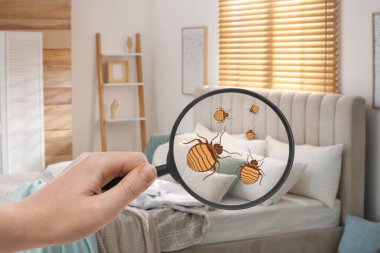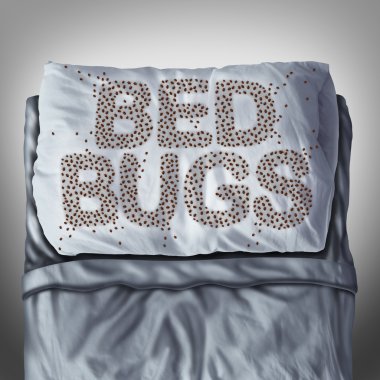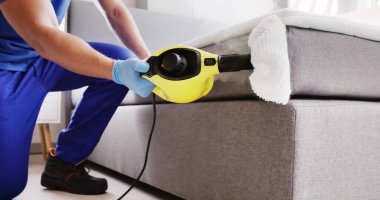- Home
- How to Dispose of Household Hazardous Waste
- How to Dispose of Bed Bug Mattress
How to Dispose of Bed Bug Mattress Safely and Effectively

Discovering bed bugs in your mattress can be a nightmare, but disposing of it safely and effectively is crucial to prevent the spread of bed bugs. The first step is to encase your furniture in plastic, ensuring there are no gaps in the plastic where bugs could escape. This method is essential not just for mattresses or furniture but for any item heavily infested that needs to be removed from your home.
Once your furniture or mattress is securely wrapped, consider how you will wrap and transport it to avoid further contamination. Contacting a professional junk removal service that is experienced in dealing with waste disposal for infested items can be a wise choice. These services understand the importance of treating bed bugs and disposing of your furniture in a manner that won't spread the infestation.
Local waste disposal regulations may have specific guidelines for disposing of infested mattresses, so it's vital to check these before proceeding. Whether you're dropping off your mattress at a local landfill or scheduling a pick-up service, ensure it remains sealed in plastic during transport. This precaution minimizes the risk of spreading bed bugs to others.
If you're considering treating bed bugs before disposal, professional extermination might be an effective route. However, if the mattress is heavily infested and beyond saving, disposal might be your best option. Remember, the goal is not only to rid your home of bed bugs but also to ensure they don't find new homes elsewhere.
Disposing of a bed bug-infested mattress requires careful planning and execution. From encasing your furniture in plastic to consulting with a professional junk removal service, each step plays a crucial role in preventing the further spread of bed bugs. By following these guidelines, you can ensure the safe and effective disposal of your infested mattress.
Identifying and Understanding Bed Bug Infestations
Understanding the spread of bed bugs is the first step in dealing with bed bugs effectively. These tiny pests are experts at hiding and can quickly turn your home into their breeding ground. Identifying an infestation early can help you bid farewell to these unwelcome guests before they spread.
Dealing with bed bugs means more than just losing sleep; it's about ensuring sweet dreams by taking back control of your bed. Recognizing the signs of bed bugs is crucial. These include small blood stains on your sheets, tiny dark spots of their droppings, and, of course, seeing the bed bugs themselves.
To effectively manage an infestation, it's important to adopt a comprehensive approach. This includes not only treating the current infestation but also taking measures to prevent future ones. Remember, the key to a bed bug-free home is diligence and prompt action. So, sleep tight and don't let the bed bugs bite by staying informed and proactive.
Recognizing Bed Bugs in Your Mattress
Identifying bed bugs in your mattress is crucial for proper disposal and professional extermination. Bed bugs are tiny, but with a comprehensive guide, you can spot them. Look for small, reddish-brown insects, about the size of an apple seed. Isolate the mattress immediately and consider sealing the mattress in plastic to prevent them from spreading to other areas while you prepare for disposal.
Check the Level of Infestation
Bed bug eradication starts with assessing the level of infestation in your mattress. If you're finding bed bugs in a mattress frequently, it indicates a significant problem. A thorough inspection involves checking not just the surface but also the seams and hidden areas where these pests like to hide.
For effective mattress disposal, understanding the extent of the infestation is crucial. If the infestation is light, you might consider treatments to salvage the mattress. However, a heavy infestation often means disposal is the best course of action to rid of bed bugs completely.
Remember, the goal is not just to dispose of the mattress but to ensure that the bed bugs don't spread to new areas. Taking decisive steps towards mattress disposal can be a significant move towards reclaiming your home from these pests.
Preparing for the Disposal of a Mattress with Bed Bugs

Before disposing of a mattress infested with bed bugs, it's essential to prevent the spread of bed bugs. Start by using a vacuum cleaner with strong suction to pull as many bed bugs out of the mattress as possible. Seal the vacuumed contents in thick plastic bags and dispose of them immediately to minimize the risk of re-infestation.
Next, wrap your mattress in thick plastic for transport. Use duct tape to seal the plastic securely, paying close attention to any seams or potential hazard areas where bed bugs might escape. This step is vital for a bed bug-free and safe disposal process. If you have a bed frame that's also infested, consider using a steam cleaner for thorough cleaning before taking any further steps.
Finally, it's time to bid farewell to your infested mattress. Ensure that you've taken all necessary precautions for safely and responsibly disposing of it. Remember, the ultimate goal is to sleep tight once again, with sweet dreams free from the worry of bed bugs. By following this comprehensive guide, you're taking significant steps towards achieving a bed bug-free environment.
Encasing the Mattress for Safe Removal
Encasing the mattress is a critical step in the proper disposal process. By following a comprehensive guide, you can ensure that bed bugs are contained. Use thick plastic to wrap the mattress entirely, making sure there are no gaps or holes. Bed bugs are tiny and can escape through the smallest openings, so double-check your work.
Once the mattress is securely encased, isolate it from the rest of your home to prevent the spread of bed bugs to other areas. This isolation is crucial for effective professional extermination later on. Seal the mattress with strong duct tape to ensure that it remains contained during transport.
Proper disposal of a bed bug-infested mattress starts with these essential steps. By meticulously encasing and isolating the mattress, you're taking a significant stride towards a bed bug-free home. Remember, it's not just about getting rid of the mattress but ensuring that the infestation doesn't spread further.
Considering Professional Extermination Before Disposal
Before disposing of your mattress, consider the benefits of a professional extermination. A pest control company can offer solutions that might save your mattress or, at the very least, ensure the spread of bed bugs is contained. Treating bed before disposal can prevent bed bugs from migrating to other areas of your home or infesting other mattresses or furniture.
Professional exterminators can assess the situation and provide proper disposal or mattress recycling options. This approach not only addresses the current infestation but also helps in preventing future ones. Remember, bed bug mattresses require specific handling to ensure they're not a threat to others.
Engaging a pest control company early can be a wise decision, especially if there are multiple infested items. Whether it’s treating bed bugs or advising on mattress recycling, their expertise can be invaluable in ensuring the infestation does not spread. Proper treatment and professional advice can be the key to effectively managing a bed bug situation.
Comprehensive Disposal Options for Mattresses with Bed Bugs

When it comes to disposing of bed bug mattresses, understanding your options is crucial for proper disposal. Mattress recycling can be an environmentally friendly choice, but it requires that the mattress receives proper treatment to eliminate the bed bugs first. Always check the seams of the mattress for any signs of bed bugs before scheduling a pickup for recycling to ensure it's safe for handling.
Local Disposal Regulations and Services
Before disposing of a bed bug-infested mattress, it's vital to familiarize yourself with local disposal regulations and services. Many areas have specific guidelines for the disposal of infested furniture to prevent the spread of bed bugs. Ensuring compliance with these regulations not only helps in the effective management of bed bugs but also contributes to the overall well-being of the community.
Scheduling Pick-Up Services
When it comes to disposing of bed bug mattresses, scheduling a pick-up service with a pest control company or a mattress recycling center is a smart move. These services are equipped to handle bed bug mattresses properly, reducing the risk of spreading bed bugs to other areas. Make sure to communicate clearly that the mattress is infested, so they can prepare accordingly.
Before the pick-up day arrives, ensure the mattress is sealed in plastic to contain the bed bugs. This step is crucial in preventing the spread of bed bugs during transportation. Most companies will provide specific guidelines on how to prepare your mattress for pick-up, so it's essential to follow these instructions carefully.
Remember, timing is everything. Schedule the pick-up as soon as possible to minimize the time the infested mattress remains on your property. Quick action not only aids in controlling the bed bug problem but also contributes to a healthier living environment by reducing the risk of infestation in other parts of your home.
DIY Mattress Disposal for Bed Bugs
If you're dealing with a mattress infested with bed bugs, you can take steps to dispose of it safely and responsibly. Start by wrapping the mattress in thick plastic and sealing it with duct tape to prevent bed bugs from escaping. Use sturdy plastic bags for smaller items and seal them tightly. When transporting the mattress to a disposal site, ensure it's securely wrapped to avoid spreading the infestation. This method requires careful planning and effort but is essential in managing a bed bug problem without professional help.
Safe Transport and Landfill Disposal
When disposing of bed bug-infested furniture, using a pickup truck for transportation ensures that the items are isolated from your living spaces. Securely wrap furniture items in plastic to prevent bed bugs from escaping during transport. For larger pieces of furniture, consider hiring a junk removal company specialized in the disposal of your furniture, ensuring they're aware of the bed bug issue.
Upon reaching the landfill, inform the staff that your furniture items are infested with bed bugs. This transparency allows the landfill to take appropriate measures to prevent the spread of bed bugs to other areas. Disposal at a landfill should be seen as a last resort, after exploring all other environmentally friendly options.
Remember, while DIY disposal is an option, it's essential to follow local regulations and guidelines for disposing of bed bug-infested furniture to ensure public health and safety. Proper disposal prevents the spread of bed bugs and protects your community from potential infestations.
Post-Disposal Cleaning and Preventive Measures

After disposing of the mattress, it's crucial to eliminate any remaining bed bugs and their eggs in your home to prevent them from spreading to other areas. Thoroughly vacuum the room, focusing on cracks and crevices where bed bugs might hide. Dispose of the vacuum cleaner bag immediately in a sealed plastic bag.
Cleaning and disinfecting the area where the mattress was located will further help in eliminating any remnants of bed bugs. Use steam cleaning on carpets and furniture, as the high heat effectively kills bed bugs and their eggs. Repeated cleaning might be necessary to ensure all bed bugs are eradicated.
Regular monitoring and maintenance are key to preventing future infestations. Encase your new mattress in a bed bug-proof cover and regularly inspect for signs of bed bugs. Implementing these measures will help keep your home bed bug-free and provide peace of mind.
Cleaning and Disinfecting the Surrounding Area
After disposing of the mattress, the next step is to thoroughly clean and disinfect the surrounding area to eliminate any remaining bed bugs and their eggs. This means vacuuming all surfaces, including floors, furniture, and even walls. Pay special attention to cracks and crevices where bed bugs might hide. After vacuuming, use a steam cleaner on carpets and upholstery to kill any lingering bed bugs with heat.
Disinfecting involves wiping down hard surfaces with a cleaning solution that will not only clean but also kill any remaining bed bugs. However, be mindful of using harsh chemicals and always follow the manufacturer's instructions. This step is critical in ensuring that your home is free from bed bugs and safe for your family.
Finally, consider applying a safe, non-toxic pesticide in areas where bed bugs are known to hide. This will help eliminate any remaining bed bugs and prevent future infestations. Remember, thoroughness is key in cleaning and disinfecting your home after disposing of a bed bug-infested mattress.
Preventing Future Infestations
To prevent future bed bug infestations, start by being vigilant when bringing second-hand furniture into your home. Inspect it carefully for signs of bed bugs before bringing it indoors. Use protective mattress covers designed to keep bed bugs out, and regularly check your bedding and furniture for any signs of bed bugs.
Maintaining cleanliness and reducing clutter in your home can also deter bed bugs since they have fewer places to hide. Vacuum regularly, focusing on areas around beds and furniture. If you live in a multi-unit building, seal cracks and crevices with caulk to prevent bed bugs from moving between units.
If you ever suspect a new infestation, act quickly by inspecting your home and contacting a professional pest control company if needed. Early detection and treatment are critical to preventing bed bugs from spreading throughout your home.
A Final Note on Bed Bug Mattress Disposal
Disposing of bed bug mattresses requires more than just dragging them to the curb. It involves careful preparation, such as wrapping the mattress in plastic wrap to prevent the spread of bed bugs during transport. Scheduling a pickup with a professional service ensures that your infested items are handled properly and reduces the risk of spreading the infestation.
Remember, proper treatment of infested furniture safely removes the problem from your home without endangering others. It's not just about getting rid of a mattress but ensuring the health and safety of your household and community. By taking the right steps, you can effectively manage a bed bug situation and prevent future infestations.
Ultimately, the key to successful bed bug management is awareness and action. Understanding how to properly dispose of infested furniture, implementing post-disposal cleaning, and taking preventive measures can protect your home against future infestations. Stay informed and prepared to keep your living environment healthy and bed bug-free.
Reflecting on the Importance of Proper Disposal and Prevention
Proper disposal and prevention of bed bug infestations are critical for maintaining a healthy home. When disposing of a mattress with bed bugs, wearing protective clothing prevents bed bugs from escaping and potentially infesting other areas of your home. This careful approach minimizes the risk of spreading the infestation.
Hiring a professional for bed bug removal and furniture disposal ensures that the problem is handled efficiently and safely. Professionals are equipped with the necessary tools and knowledge to cover the furniture properly, preventing bugs from escaping during transport.
Ultimately, the effort and care put into disposing of infested furniture, along with ongoing preventive measures, safeguard your home against bed bugs. It's not just about solving the problem at hand but also about preventing future infestations, ensuring a safe and comfortable environment for you and your family.
learn more about how to dispose of household hazardous wastes